Keywords: Trauma and the body.
Every trauma, whether it occurs in a physiological, cognitive, emotional, or interpersonal form, affects the physical body. The healing of trauma begins in the body. Our body is the accurate history of our experiences in life; therefore, it is essential that we include the body in the healing process.
Muscle contractions protect the physical body
Trauma causes very deep muscle contractions designed to protect the body from harm or possible death during a traumatic episode. The contraction in these muscles must be released to restore the body back to its relaxed state.
Every trauma, whether it occurs in a physiological, cognitive, emotional, or interpersonal form, affects the physical body.
Trauma and the body: Our nervous system resolves trauma reactions
Once the trauma is over, the body’s nervous system is designed to shake out this deep muscular tension and help the body return to its normal state. This shaking, evoked by the nervous system much the same way as we experience any fear or anxiety, signals the brain to release the contraction and return to a normal state of relaxation.
Overemphasis on thought distorts body sensitivity
Due to an overemphasis on the mind, the result of social and politically ingrained opinions, programming, and stigma, we have deadened this shaking mechanism so that it no longer reduces the muscular tension, causing us to continue to carry it in our bodies long after the trauma is over.
Post Traumatic Stress Disorder (PTSD)
PTSD is the term used to explain the continuation of disturbing thoughts, emotions, and feelings that persist even after the trauma is over.
Post-trauma reaction imprison us into reliving the experience
Because the experience is emotionally and physiologically overwhelming, the body stores the memories, thoughts, and emotions of the trauma in order to process them at a later date. The high chemical charge left in the body after trauma continually seeks to discharge. When that discharge does not occur, both the emotional and rational parts of our brains translate this excessive charge into intense emotions.
Trauma and the body: Unhealed trauma creates repetition compulsive behavior
PTSD is caused by the lack of release of the high excitement or anxiety (biochemical energy) that was generated at the time of the traumatic event. The body continues to seek a discharge from this overstimulation, so the brain unconsciously reproduces situations similar to the original trauma. This is the mind’s attempt to replay the traumatic scenario so that that the energy can be discharged, in the hope that the victim will now become the survivor. The most common example of this is when abused children enter into abusive relationships as adults.
When an animal is confronted with a novel or life-threatening situation in the wild, it responds naturally by fighting, fleeing, or freezing. If the animal survives, it discharges excess energy from its nervous system through shaking, trembling, and twitching. This discharge leaves the animal ready to respond to any subsequent threat adequately. Animals may move through this sequence several times in a day without any adverse effects, and without exhibiting symptoms of trauma.
Our NeoCortex vs Primal Brain Structures
Apart from our well-developed neocortex or “thinking brain,” our innate responses to threat are identical to animals in the wild; however, in our modern “civilized society,” we are not always able to respond in the natural way that our nervous system was designed to. In fact, the result of toxic social/political misinformation is stigmatizing. Survivors who have these beliefs ingrained within themselves have deadened this natural mechanism. They might attempt to do the impossible– “Suck it up”, “Get over it”– rather than processing it. Nevertheless, and regardless of many factors, your ” animal brain” responded as if it was a life-threatening situation, and a great deal of energy was mounted in your nervous system to protect yourself.
If you did not have the opportunity to fight or flee, or process the trauma, it is likely you froze and became stuck.
Trauma side effects/symptoms are signs of a deregulated nervous system, and this is why natural healing is very useful and a necessary tool in trauma recovery.
Written by Erin Paterson
